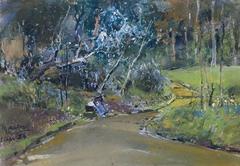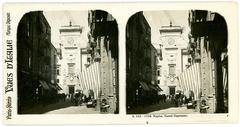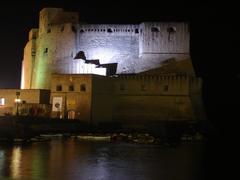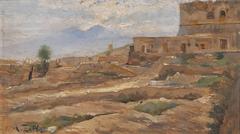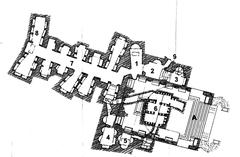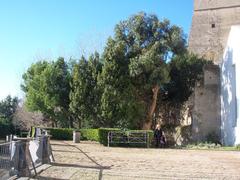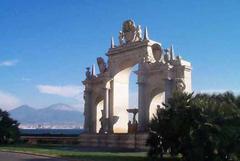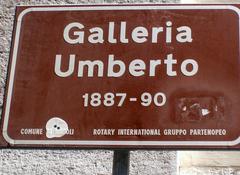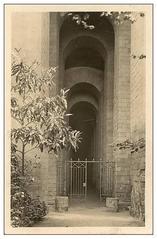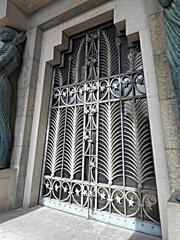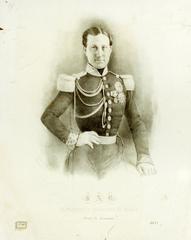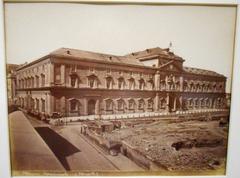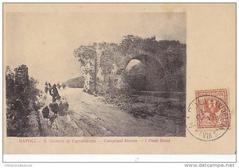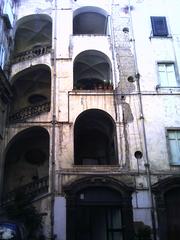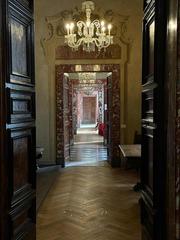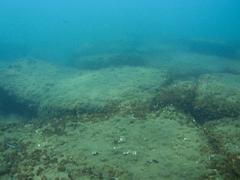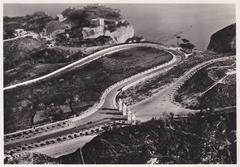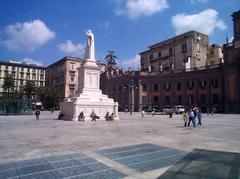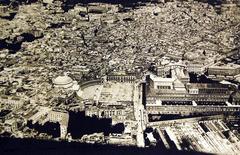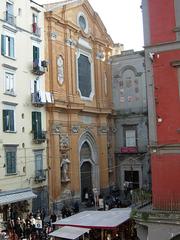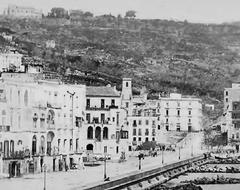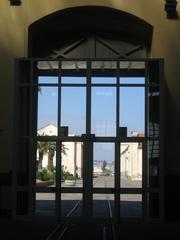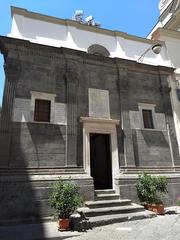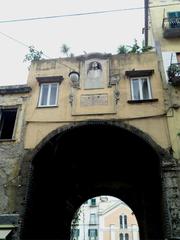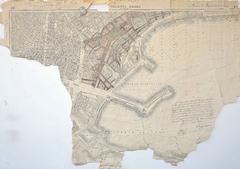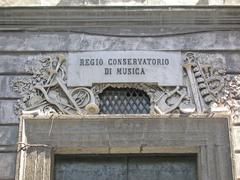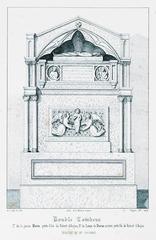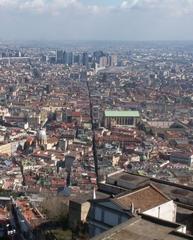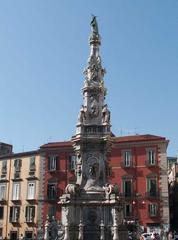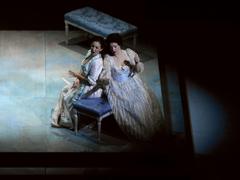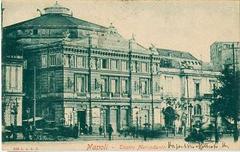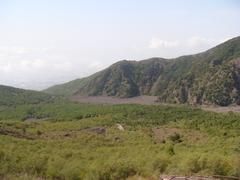
Museo Artistico Industriale Filippo Palizzi: Visiting Hours, Tickets, and Complete Visitor Guide
Date: 04/07/2025
Introduction
Located in the heart of Naples, the Museo Artistico Industriale “Filippo Palizzi” is a cornerstone of the city’s artistic and industrial heritage. Founded in 1878 by Filippo Palizzi, a visionary Italian painter and reformer, the museum was established to bridge the worlds of fine arts and industrial craftsmanship, setting a precedent in art education and applied arts in southern Italy. Today, the museum offers an unparalleled journey through centuries of Neapolitan creativity—featuring extensive collections of ceramics, textiles, metalwork, and archaeological artifacts—all housed within an architecturally significant building that embodies its educational mission.
Whether you are an art lover, history enthusiast, or a traveler eager to uncover Naples’ cultural treasures, this guide provides detailed information on visiting hours, ticketing, accessibility, highlights from the collections, and practical tips for making the most of your visit. For further details, consult the official museum website and trusted resources such as WikiArt, Touring Club, and the Napoli Visitors Guide.
Origins and Foundation
The Museo Artistico Industriale “Filippo Palizzi” was established as part of a European movement to integrate art and industry, inspired by institutions such as London’s Victoria and Albert Museum. Officially opened in 1878, the museum was conceived as both a repository of applied arts and an educational center, offering instruction in artistic and industrial disciplines. Filippo Palizzi, deeply influenced by his exposure to the Barbizon School and international exhibitions, championed the need for such an institution in Naples (WikiArt).
Filippo Palizzi: Legacy and Vision
Filippo Palizzi (1818–1899) was a renowned Italian painter whose advocacy for modernizing art education left a lasting mark on Naples. His progressive approach led to the co-founding of the Società Promotrice di Belle Arti and the museum itself, where he served as the first director until 1891. Palizzi’s contributions included the establishment of workshops—most notably in ceramics—alongside a curriculum that combined theoretical study and hands-on practice (WikiArt, Wikipedia).
Educational Mission and Influence
From its inception, the museum’s educational mission was groundbreaking—offering courses in drawing, painting, sculpture, ceramics, metalwork, and textiles. It sought to equip students with the skills needed for both artistic and industrial success, becoming a model for similar schools throughout Italy. Graduates played a key role in reviving local crafts and producing works recognized at national and international exhibitions.
Architectural and Artistic Heritage
The museum occupies a building purpose-built for its dual function as both museum and school. Its layout features functional spaces for instruction, workshops, and public galleries. The collections span ceramics, glass, metalwork, textiles, and furniture—many produced by students and local artisans. Notably, Filippo Palizzi and his brothers donated significant works, enriching the museum’s resources (Wikipedia).
Collections: Highlights and Special Features
Ceramics
The museum is renowned for its ceramics collection, which includes over 6,000 pieces from Renaissance majolica and Baroque faience to modern Capodimonte and Neapolitan works. Educational pieces demonstrate historical techniques, and the ceramics studio remains a highlight for visitors (Museionline).
Decorative Arts
Explore collections of metalwork—ranging from ornate jewelry to household objects—along with woodwork, cabinetry, and Neapolitan goldsmithing. These items reflect both traditional craftsmanship and evolving design trends (Napoli Visitors Guide).
Archaeological and Egyptian Artifacts
The museum’s archaeological section includes Magna Graecia ceramics, Italic artifacts, and an important collection of Egyptian antiquities and rare Coptic textiles, with donations from Prince Aslan D’Abro Pagratide and the Musée Guimet (Museionline, Wikipedia).
The Filippo Palizzi Room
This dedicated space features Palizzi’s major paintings and preparatory drawings, including “Leone e scena di caccia grossa” and “Fontana con elementi naturalistici”, exemplifying his naturalist style.
Didactic Collections
Teaching models and student works from the Istituto Statale d’Arte “Filippo Palizzi” illustrate the evolution of art education in Naples (Wikipedia).
Location and How to Get There
Address: Piazzetta Demetrio Salazar, 6, San Ferdinando district, Naples.
- By Metro: Closest station is Toledo (Line 1), a 10-minute walk from the museum.
- By Bus: Multiple bus routes serve Via Toledo and Via Chiaia.
- By Car: Parking is limited; use nearby public garages and walk to the museum.
- On Foot/Bicycle: The central location makes it easy to combine your visit with other Naples attractions (Mapcarta).
Visiting Hours, Tickets, and Accessibility
- Opening Hours: Monday to Friday, 9:00 AM – 1:00 PM. Visits are by reservation only.
- Admission: Free entry for all visitors.
- Reservations: Required; book via the official museum website or by contacting the Istituto Statale d’Arte “Filippo Palizzi”.
- Accessibility: The museum is wheelchair accessible, with ramps, elevators, and adapted restrooms.
- Guided Tours: Available in Italian and English by advance booking; recommended for deeper insights into the collections.
Visitor Facilities
- Cloakroom: Complimentary storage for coats, small bags, and umbrellas.
- Restrooms: Accessible facilities on each floor.
- Gift Shop: Books, postcards, and reproductions available.
- Nearby Cafés: Numerous options within walking distance for traditional Neapolitan refreshments.
Practical Tips and Visitor Experience
- Photography: Allowed without flash; restrictions may apply in special exhibitions.
- Group Visits: Groups larger than 10 should book in advance.
- Language: Most signage is in Italian; English tours and select bilingual materials available.
- Duration: Allocate 1.5–2 hours for a comprehensive visit.
- Nearby Attractions: Combine your trip with nearby sites such as the Naples National Archaeological Museum, Spaccanapoli, Teatro di San Carlo, and Piazza del Plebiscito.
Special Events and Educational Activities
The museum regularly hosts temporary exhibitions, workshops, and family-friendly educational programs, especially on Saturdays. Check the official events page for schedules.
Frequently Asked Questions (FAQ)
Q: What are the current visiting hours?
A: Monday to Friday, 9:00 AM – 1:00 PM, by reservation. Confirm on the official website for updates.
Q: Is admission really free?
A: Yes, entry is free for all visitors.
Q: Are guided tours available in English?
A: Yes, by advance booking; tours are available in both Italian and English.
Q: Is the museum accessible for visitors with disabilities?
A: Yes, with ramps, elevators, and adapted restrooms.
Q: Can I take photographs?
A: Non-flash photography is permitted in most areas.
Q: How do I make a reservation?
A: Book via the official website or by contacting the museum directly.
Plan Your Visit
Experience the rich artistic and industrial heritage of Naples by exploring the Museo Artistico Industriale “Filippo Palizzi”. For the latest details on visiting hours, special events, and to secure your reservation, visit the official museum website.
Download the Audiala app for personalized audio guides, curated itineraries, and insider tips. Follow us on social media for updates and inspiration to enhance your cultural journey in Naples.
References and Further Reading
- WikiArt on Filippo Palizzi
- Touring Club Italiano – Museo Artistico Industriale Filippo Palizzi
- Napoli Visitors Guide – Museo Artistico Industriale
- Museionline – Museo Artistico Industriale F. Palizzi
- Fondo Ambiente Italiano (FAI) – Museo Artistico Industriale di Napoli
- Official Museo Artistico Industriale Palizzi Website

